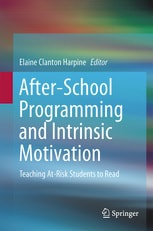 This model of the ISS represents a real space station. At my reading clinic, we teach children to search for facts to tell whether something is true or false. It is important to teach children to identify misinformation.
This model of the ISS represents a real space station. At my reading clinic, we teach children to search for facts to tell whether something is true or false. It is important to teach children to identify misinformation. Misinformation affects everything we do, including health and education, and we need to learn to evaluate our sources. We just had four astronauts return to earth from the International Space Station. Yet, no matter how many pictures or facts verify that our planet earth is indeed not flat. “Flat earthers” still contend that science is wrong and that the earth is flat.
Why do some people refuse to accept scientific facts?
Failure to accept scientific facts has been a major problem throughout the coronavirus pandemic. Why would people choose to believe unproven gossip from social media instead of scientific research facts?
Just in case you're wondering, yes, the earth is definitely round. No, it is not flat. The coronavirus vaccine can and does save lives if people get vaccinated, but not being vaccinated can be deadly. So far, the vaccine is the best way we have to save human lives against COVID-19.
As Dr. Stuart C. Ray, M. D.,A professor of Medicine and Oncology in the Division of Infectious Diseases at Johns Hopkins University School of Medicine in Baltimore, said,
"It seems compelling, even for skeptics, that unvaccinated people represent 99% of those now dying [in the US] from COVID-19…."
Yet, if you turn to social media right now, you will find many people saying they are still afraid to get vaccinated. Why? Especially when statistics show that nearly all of the COVID-19 deaths in the US right now are from people who are not vaccinated. Why are people taking such a risk? Why would people take such a risk with their children and youth? I contend that the cause is misinformation.
Once again, people are unwilling to believe science. Don’t forget Galileo! In 1633, Galileo was accused of heresy because he believed that “the sun is the center of the world… does not move from east to west, and that the earth does move, and is not the center of the world.”
It took 300 years to get people to accept that Galileo was right. I hope it doesn't take that long for the COVID-19 vaccine. Some of us will not make it.
Yes, in case you have not guessed, I completely and totally believe in the COVID-19 vaccine, and I'm proud to say I am fully vaccinated, including my booster shot.
No, I do not take my medical advice from social media, nor from politicians. As I have said before, for medical issues, I turn to real doctors.
Scientific facts can save lives. Social media gossip can kill.
Recent research by Yan Su, a doctorial graduate student at Washington State University, found that the more frequently people turned to social media for their news or information about the coronavirus pandemic, the more likely they were to believe misinformation—false information. Su went on to say that blind reliance on social media is dangerous:
“Fact checkers are important for social media platforms to implement. When there is no fact checker, people just choose to believe what is consistent with their pre-existing beliefs…. It’s also important for people to try to get out of their comfort zones and echo chambers by talking with people who have different points of view and political ideologies. When people are exposed to different ideas, they have a chance to do some self-reflection and self-correction…. During the COVID-19 pandemic, social media has spread a lot of conspiracy theories and misinformation, which has negative consequences because many people use these false statements as evidence to consolidate their pre-existing political ideologies and attack each other…. It’s important to understand the antecedents and motivations for believing and circulating misinformation beliefs, so we can find ways to counteract them.”
Yan Su makes an excellent point: we need to understand why people circulate incorrect and false information, especially since such misinformation can and has killed people during the coronavirus pandemic. Before we try to understand why people circulate misinformation or in some cases out and out lies, let's define exactly what misinformation is. We’ll turn to a research study on the effects of misinformation to clarify what is presently being meant by the term misinformation. This research article was published in Progress in Disaster Science, a journal devoted to examining public health emergencies.
“Misinformation… is incorrect information… false information … information received via social media, and misinformation on social media can generate disastrous responses from the individual public. Unfortunately, social media does not always share correct information.”
As the researchers indicate in their article, we can break down misinformation by whether it is intentionally circulated or haphazardly circulated. Misinformation can therefore be defined as incorrect or false information that is either shared by mistake as correct when in fact it is false, or information known to be false and shared intentionally to harm others. As the researchers concluded, it is all inaccurate information, regardless of whether it was shared intentionally or simply without checking to verify facts. Misinformation or false information can and does hurt people and can even kill. The researchers even go on to say that social media should be held responsible and even liable for the information that they spread. Social media could even play an important role in stopping the spread of misinformation and thereby reducing the increase of COVID-19.
So, misinformation is not, as some claim, a different opinion or “alternative facts.” No, misinformation is false information. It is information that is not true.
So, what should we do? We know that there are people who are sharing misinformation left and right on social media, not caring and not bothering to check whether it is true or false before they share it. They're just simply pushing the little button and sending it off to zillions of others.
We also know that there are people who are intentionally sharing false information, knowing that it is false, and doing so for their own personal benefit. Yes, there are people making money off of sharing misinformation. We'll talk about this very topic in a later blog post. For now, I want to talk about the problems misinformation causes.
Misinformation is not a new problem.
Misinformation has plagued us for many years and has caused problems in many different areas of society. Let’s look at an example outside the political arena of COVID-19.
I am a psychologist. I work with children who struggle to learn to read because we found that reading failure is one of the underlying root causes of other psychological and even many social problems. Research shows that 85% of adolescents and youth who end up in the juvenile court system are “functionally illiterate:” they cannot read. Statistics also show that 70% of American prison inmates cannot read above the 4th grade level. Research also shows that 78% of students who cannot read at grade level by the end of 4th grade never catch up to their grade level in reading.

Misinformation about reading
In 2019, before the pandemic began, statistics showed that over 60% of students in the 4th, 8th, and 12th grade could not read at their grade level in school. Reading failure is a major psychological, social, as well as educational problem in the United States today. If we can correct reading failure, then we can correct other problems before they start. Unfortunately, we are not correcting reading failure; instead, we are locked in a misinformation war. It’s called the Reading Wars. It could also be called the Misinformation Wars.
___________________
See my blog post: Reading Wars Are Over! Phonics Failed. Whole Language Failed. Balanced Literacy Failed. Who Won? It Certainly Wasn’t the Students.
___________________
Oh yes, misinformation is everywhere. In schools, we call it the Reading War. This misinformation battle has been flowing hot and heavy for the past 21 years, and there is no end in sight.
Does this misinformation fit our definition? Yes, unfortunately, it does. Sometimes it is spread by people who do not know better and do not take the time to check their facts. Other times, reading misinformation is spread intentionally for profit. Misinformation on reading is also being spread by social media.
___________________
See my blog post: When Phonics Fails
___________________
Just as with coronavirus scientific research, scientific research in reading could lead us to a better solution for children and youth. We have scientific proof that you can actually teach children who are failing today in reading. At my reading clinic, we have even had students move up four grade levels in one year in reading. These were students who walked in the door failing in reading. How? We corrected the misinformation and started teaching the children correctly.
I started working with children with reading problems because of the direct link with mental health and reading failure. The negative emotions and negative classroom events brought on by reading failure directly affected the mental health, well-being, and success of children. If we could prevent reading failure, we would stop many mental health problems before they even began. Yet, just like the “flat earthers” and the coronavirus misinformation spreaders on social media, education classrooms and students struggling to learn to read are being attacked by misinformation.
At my reading clinic, we have been very successful at reversing reading failure through a method called vowel clustering. My reading clinics incorporate both teaching children how to read and counseling to encourage children to believe in themselves again--to believe that they can indeed learn to read. Yes, we have been very successful, and it is true, you really can teach a child to read, even one who has failed for nine straight years. Yes, the student learned to read through the vowel clustering teaching method, when everything else had failed. Learning to read, totally changed this student’s life.
Misinformation really can be harmful.
So, why do people refuse to believe these scientific facts?
Many are saying because our society has been infected with an “infodemic.”
“An infodemic is an overabundance of information, both online and offline. It includes deliberate attempts to disseminate wrong information to undermine the public health response and advance alternative agendas of groups or individuals. Misinformation costs lives. …disinformation is polarizing public debate on topics related to COVID-19; amplifying hate speech; heightening the risk of conflict, violence and human rights violations; and threatening long-terms prospects for advancing democracy, human rights and social cohesion.”
Yes, I would say that is a very accurate description of exactly what is happening right now in the United States. So, why are we so saturated with misinformation, particularly on social media? Why do we have an “infodemic” going on in the middle of a pandemic? Why are so many people being taken in by this false information?
Because people are refusing to question what they read or hear through social media. As long as people are willing to believe misinformation, false information will continue to cause harm.
Is this misinformation and believing misinformation causing people to not get vaccinated? Yes. Does this misinformation cause death? Yes.
As Surgeon General Vivek Murthy stated during an interview,
“Numerous factors contribute to the vaccination problem, including the misinformation that is reaching the refusers through many pathways, including social media. One direct link is from those generating the misinformation (and there are many) to the hesitant via social media.”
So, yes, misinformation about COVID-19 is dangerous, and it kills.
Where do you get your information about COVID-19? Do you rely on social media? Do you evaluate what you read or hear on social media? Do you believe everything you see printed on social media or voiced on your favorite radio or TV station? Do you question or search for facts?
At my reading clinic, we teach our students to search for facts. We teach the difference between fiction and non-fiction. We teach the difference between real world facts and make-believe. We find that many students are so saturated by “superheroes” and stories and movies about “magic” that they sometimes struggle to distinguish between what’s real and what is make-believe.
At the beginning, I showed you a picture of a NASA paper model of the International Space Station. A pattern for this model is available on NASA's website for any student to make.
 This is a make-believe model of a space station. I use this model to teach children the difference between what is real and what is make-believe.
This is a make-believe model of a space station. I use this model to teach children the difference between what is real and what is make-believe. Should we teach adults to evaluate truth and fiction?
Sander van der Linden, Professor of Social Psychology in Society and Director of the Social Decision-Making Lab at the University of Cambridge, and Jon Roozenbeek, postdoctoral fellow in Psychology at Cambridge suggests that we teach adults the difference between what is real and what is false. They are creating a video game to teach adults how to determine what is true and what is false on social media. After an interesting discussion, they say,
“The spread of false information about COVID-19 poses a serious risk to not only the success of vaccination campaigns but to public health in general. … rumours have been shown to spread faster, further and deeper in social networks than other news, making it difficult for corrections (such as fact-checks) to consistently reach the same number of people as the original misinformation. [we] … focus on the more general ways in which people are misled – manipulation techniques such as the use of excessively emotional language, the construction of conspiracy theories, and the false testimony of fake experts.
“… playing a misinformation game reduces the perceived reliability of misinformation (even if participants had never seen the misinformation before); increases people’s confidence in their ability to assess the reliability of misinformation on their feed; and reduces their self-reported willingness to share misinformation with other people in their network.”
Misinformation video games to train adults to distinguish the truth from false information on social media is certainly an interesting idea. I’ll tune back in when their research is reported to see the final results.
Next, I want to look at some of the people who are spreading this misinformation. In the meantime, maybe, we can all look with a more critical examination of what we are reading on social media. Is what you are reading or hearing really true? How can you tell? Search for the facts.
Photos: Copyright Elaine Clanton Harpine
 RSS Feed
RSS Feed
